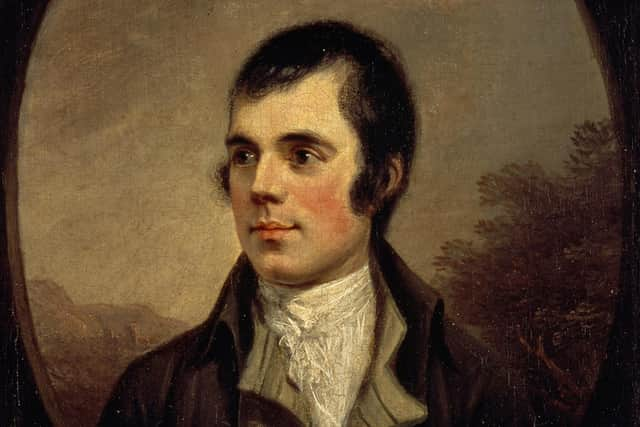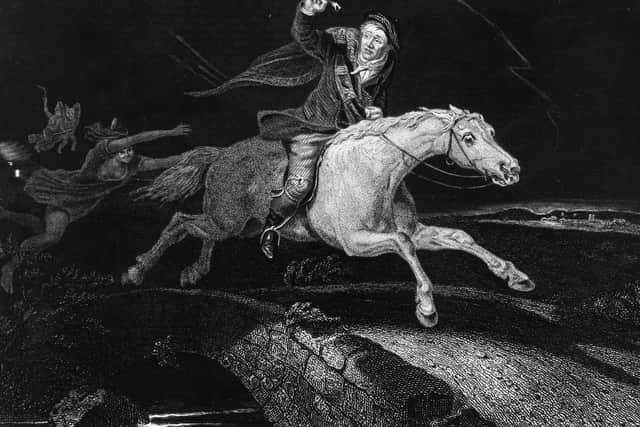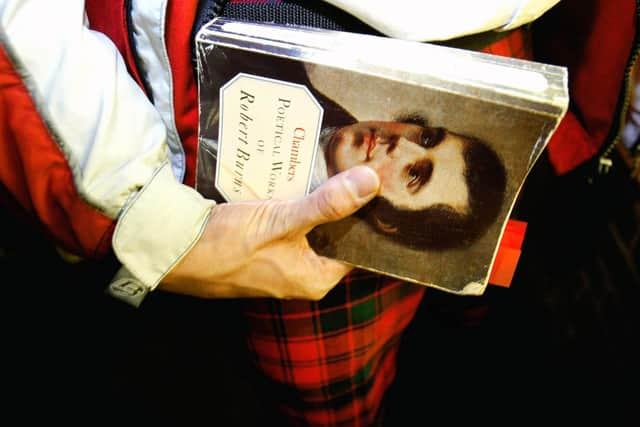Burns Night 2022: When was Robert Burns born? Here's who Robert Burns was, where he was born and how he died
and live on Freeview channel 276
Every late January sees Scots raise a toast and plates of haggis, neaps and tatties to honour Scotland's national poet and the Bard of Ayrshire, Robert Burns on Burns Night.
The legacy of the pre-Romantic 18th century poet has long lived at the heart of Scottish culture – ingrained in our literature, heritage and tourism.
Advertisement
Hide AdAdvertisement
Hide AdHe is known for writing epic and folktale-inspired poems which captured the attention of readers in Scotland and beyond, thanks to his distinctive poetic voice and use of Scots language.


But for some, Robert Burns’ life and poetic success remains a mystery, with many visitors to Scotland left wondering why the poet is still honoured with at least 20 statues in the country as well as his own honorary night of celebration centuries after his death.
Here’s everything you need to know about the Scottish bard, including where Robert Burns was born, how he died and why he is celebrated on Burns Night in Scotland.
When and where was Robert Burns born?


Robert Burns was born on 25 January 1759 at Burns Cottage in Alloway, a village near Ayr, to tenant farmer father William Burnes and mother Agnes Brown.
Advertisement
Hide AdAdvertisement
Hide AdWorking as a farmer on and off following the death of his father in 1784, Burns transformed a childhood passion for reading, writing and learning into a successful career as a Scots poet.
His affinity with nature and love of the Scottish landscape went hand in hand with his poetic style and sensibility, having first begun to compose poems during long hours of tough farm labour.
After he paved his way to literary acclaim in Scotland and beyond with the production of his first collection of Scots poems, entitled ‘Poems, Chiefly in the Scottish dialect’, in 1786, he later married Jean Armour in 1788.


The couple had previously sought to marry after their relationship resulted in the birth of two children, but this was forbidden by Burns’ father until the late 1780s.
Advertisement
Hide AdAdvertisement
Hide AdBurns had numerous love affairs throughout his career and wrote many poems inspired by his relationships with women such as Mary Campbell from Dunoon, who he paid tribute to in his poems "The Highland Lassie O" and "Highland Mary".
What are Robert Burns’ most famous poems?
The most well known poem written in Scots by Robert Burns is, without a doubt, Auld Lang Syne.
While the tune sung every Hogmanay to mark the start of a new year in Scotland is based on an old Scottish folk song, we take the lyrics from the bard’s poem written in 1788.
Since being first matched with a tune in 1799, it has been sung in countries around the world as a traditional way of celebrating the end of the old year and transition to the new.
Advertisement
Hide AdAdvertisement
Hide AdBut other famed and celebrated works by the Scottish bard include epic poem Tam O’Shanter, in which drunken farmer Tam rides home on his horse, Meg, from an Ayr public house to his angry wife.
The 228 line poem sees Tam encounter a “hellish legion” of witches, warlocks and the Devil at Alloway Kirk – haunted and lit up in an eerie, gothic scene – and later bore the name for the flat tartan ‘Tam O’Shanter’ bonnet cap which are a hallmark of Scottish tourist shops.
Other noted works in Burns’ career included Ae Fond Kiss, To a Mouse, The Battle of Sherramuir, Address to a Haggis, A Red, Red Rose and Scots Wha Hae, which served as a rebuttal of English rule in the 18th century with lines such as “Wha, for Scotland's king and law / Freedom's sword will strongly draw”.
Burns remains hugely popular around the world. In Russia and Eastern Europe he is best-known for The Twa Dugs and A Man's a Man for a That.
Why do we celebrate Burns Night in Scotland?
Advertisement
Hide AdAdvertisement
Hide AdBurns Night is celebrated on 25 January each year in Scotland to mark the birth of Robbie Burns and is widely considered to be Scotland’s “other national day”, alongside St Andrew’s Day in November.
Burns celebrations often see the culmination of a number of Scottish cultural traditions to pay tribute to Rabbie and his undying love of Scotland, its landscape and its people.
The first instance of Burns Night was held more than 200 years ago, when several of the poet’s closest friends came together to celebrate Burns and his works on the fifth anniversary of his death in 1801.
The meal included a full haggis supper, merriment and performances of Burns’ songs and poems.
How did Robert Burns die?
Advertisement
Hide AdAdvertisement
Hide AdTowards the end of his life, Burns was struggling to earn a living and was also plagued by ill health.
He had turned to training as an excise or tax collector in the late 1780s as his attempts at tenant-crofting on Ellisland Farm in Dumfriesshire began to prove unsuccessful.
By 1791, Burns had given up on the farm entirely and became an exciseman in Dumfries – where he likewise became well-versed in lyric writing and contributed to several high-profile Scottish music collections such as ‘A Select Collection of Original Scottish Airs for the Voice’ (1793) by composer George Thomson.
Burns came to stay in the nearby Brow Inn (demolished in 1863) on 4 July 1796 to seek a cure for what we now know was rheumatic fever on the advice of his doctor, William Maxwell.
Advertisement
Hide AdAdvertisement
Hide AdThe "cure" comprised drinking the well water and bathing in the Solway Firth.
Burns died on 21 July 1796 after his health had worsened considerably.
In his 2008 book, ‘Robert Burns the Patriot Bard’, Patrick Scott Hogg claimed that during the autumn of 1791 things Burns’ illness was so severe that he was visited by a doctor five times in a single week due to reports of being feverish and having painful joints.
The poet’s renowned final resting place, the Burns Mausoleum in the cemetery of St Michael's Kirk in Dumfries, is a five minute walk from the Globe Inn where he scratched his name into the window. The name is still there.
A message from the Editor:
Thank you for reading this article. We're more reliant on your support than ever as the shift in consumer habits brought about by coronavirus impacts our advertisers.
If you haven't already, please consider supporting our trusted, fact-checked journalism by taking out a digital subscription.
Comment Guidelines
National World encourages reader discussion on our stories. User feedback, insights and back-and-forth exchanges add a rich layer of context to reporting. Please review our Community Guidelines before commenting.

